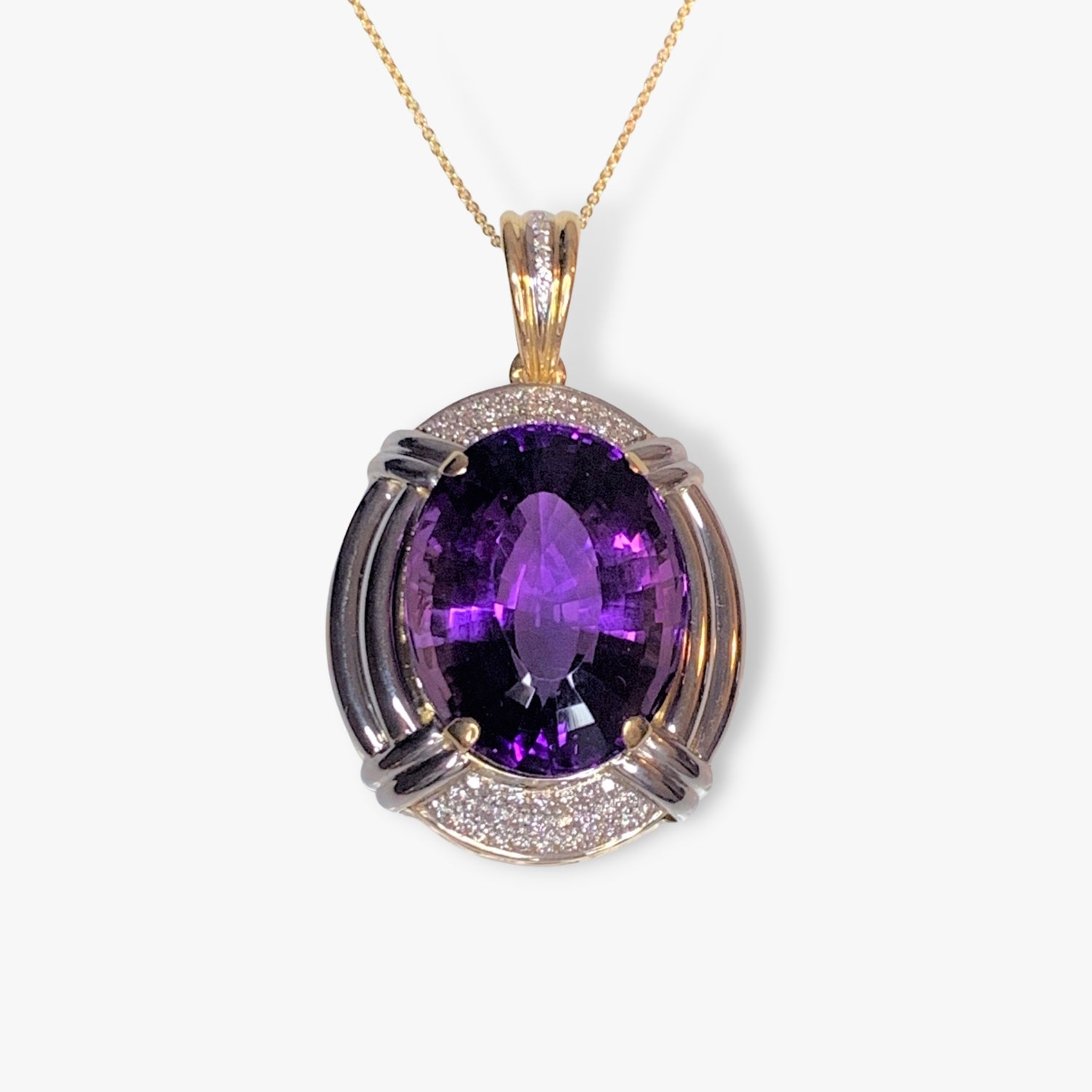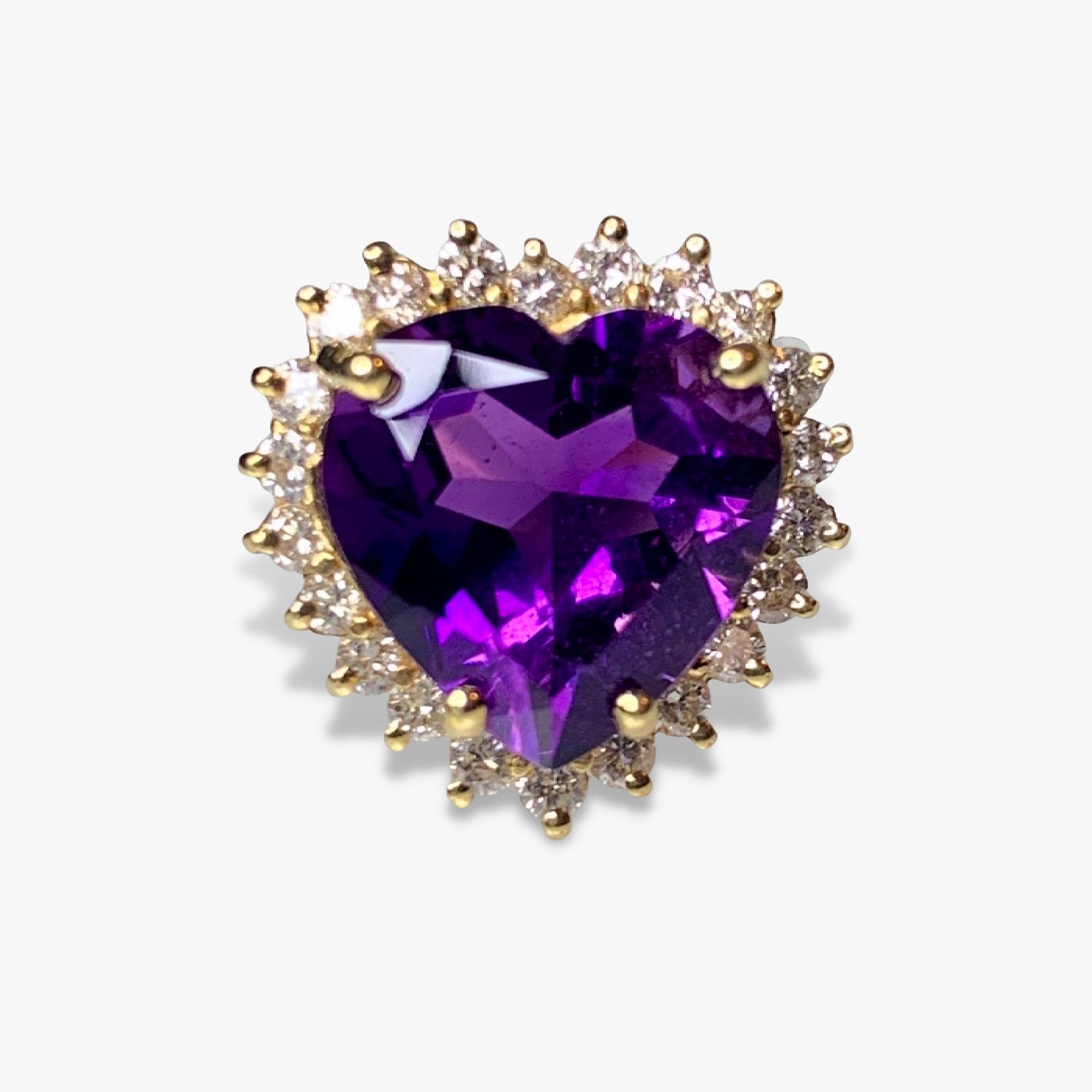Amethyst, with its mesmerizing hues ranging from delicate lilac to deep violet, has captivated humanity for centuries. Beyond its aesthetic allure, this enigmatic gemstone holds a rich tapestry of history, lore, and metaphysical significance.
The Origins and Formation of Amethyst

Amethyst, with its enchanting violet hues, owes its origin and formation to a fascinating interplay of geological processes spanning millions of years. As a variety of quartz, amethyst emerges from the depths of the Earth through a complex series of events that imbue it with its distinct color and crystalline structure.
Amethyst primarily forms within cavities or voids in volcanic or metamorphic rocks. These cavities, often called geodes, provide the ideal environment for the crystallization of quartz. The geodes themselves can originate from a variety of geological processes, including volcanic eruptions, hydrothermal activity, or the dissolution of minerals within sedimentary rocks.
The formation of amethyst begins with the deposition of silica-rich solutions within the cavities of these geodes. These solutions, often containing dissolved minerals and trace elements, slowly infiltrate the voids over extended periods. The exact composition of these solutions, including the presence of iron and other impurities, plays a crucial role in determining the color and clarity of the resulting amethyst crystals.
The characteristic purple color of amethyst arises primarily from the presence of iron impurities within the quartz crystal lattice. During the crystallization process, iron atoms can become trapped within the crystal structure, imparting a pale lilac to a deep violet hue to the quartz. The intensity and saturation of the color can vary depending on factors such as the concentration of iron, the duration of crystallization, and external influences like radiation exposure.
Various environmental factors, including temperature, pressure, and the presence of other minerals, can influence the formation of amethyst. For example, fluctuations in temperature and pressure during crystallization can lead to the development of distinct zoning patterns within the crystals, resulting in banded or multicolored specimens. Additionally, the presence of other minerals or gases in the surrounding rock can affect the growth and clarity of the crystals, contributing to the diversity of amethyst specimens found in nature.
The formation of amethyst is a gradual process that unfolds over geological timescales, often spanning millions of years. As silica-rich solutions slowly infiltrate the cavities within geodes, quartz crystals gradually grow and develop, layer by layer, until they reach their full size and clarity. The precise duration of this process can vary depending on factors such as the availability of silica-rich fluids, the rate of crystal growth, and the geological history of the surrounding environment.
The Cultural and Historical Significance
Amethyst's cultural and historical significance spans millennia, with civilizations around the world attributing mystical properties and symbolic meanings to this captivating gemstone. From ancient times to the present day, amethyst has been revered, cherished, and incorporated into rituals, adornments, and artifacts across diverse cultures.
In ancient Egypt, amethyst held a prominent place in society, believed to possess protective qualities against malevolent forces. Amulets and talismans crafted from amethyst adorned both the living and the deceased, serving as symbols of spiritual protection and guidance in the afterlife.
Among the ancient Greeks, amethyst was associated with Dionysus, the god of wine and revelry. According to legend, Dionysus, angered by an insult, sought vengeance by unleashing tigers upon a maiden named Amethystos. To save her from harm, the goddess Artemis transformed Amethystos into a statue of pure crystalline quartz. Overcome with remorse, Dionysus wept tears of wine onto the stone, staining it with a deep purple hue and creating the first amethyst. As a result, amethyst came to be regarded as a talisman against intoxication, and Greeks often adorned their wine goblets with amethyst to prevent inebriation.
During the Middle Ages and Renaissance, amethyst regained popularity in Europe as a symbol of royalty, spirituality, and enlightenment. Bishops and clergy adorned themselves with amethyst jewelry and incorporated the gemstone into ecclesiastical regalia as a sign of divine favor and purity. Its association with sobriety also made it a favored stone for religious leaders, symbolizing clarity of thought and spiritual clarity.
The Victorian era saw a resurgence of interest in gemstones and their symbolic meanings, leading to a renewed appreciation for amethyst as a gemstone of romance, elegance, and refinement. Amethyst jewelry, often adorned with intricate filigree and enamel work, became fashionable among the aristocracy and bourgeoisie, adorning necklaces, earrings, and brooches in elaborate designs.
In modern times, amethyst continues to hold sway in metaphysical and New Age circles, where it is revered for its purported healing properties and spiritual significance. Advocates of crystal healing believe that amethyst can promote inner peace, emotional balance, and spiritual enlightenment. It is often associated with the crown chakra, the center of spiritual consciousness, and is used in meditation, energy work, and holistic therapies to facilitate spiritual growth and psychic development.
Amethyst in Jewelry
Amethyst's enchanting beauty and rich symbolism make it a perennial favorite in the world of jewelry, cherished for its regal hues and mystical allure. From exquisite rings and pendants to ornate earrings and bracelets, amethyst is celebrated for its versatility and timeless elegance, gracing both casual and formal occasions with its captivating presence.
Amethyst's deep purple hues evoke a sense of sophistication and refinement, making it a popular choice for classic jewelry pieces. Rings featuring amethyst as the centerpiece gemstone exude understated elegance, whether set in delicate bands for everyday wear or embellished with intricate details for special occasions. Amethyst pendants, suspended from chains of silver or gold, add a touch of glamour to any ensemble, complementing both daytime attire and evening wear with their radiant charm.
For those seeking to make a bold fashion statement, amethyst offers endless possibilities for creativity and self-expression. Oversized cocktail rings adorned with large amethyst gemstones demand attention, infusing any outfit with a pop of color and personality. Statement necklaces featuring clusters of amethyst gems, interspersed with diamonds or other colored stones, create a striking focal point, drawing the eye and sparking conversation.
Amethyst's status as the birthstone for February endears it to individuals born during this time, who proudly wear it as a symbol of their identity and personality. Birthstone jewelry featuring amethyst allows wearers to showcase their unique birth month with pride, whether through dainty stud earrings, elegant birthstone rings, or personalized charm bracelets adorned with amethyst accents.
Amethyst's timeless appeal lends itself beautifully to vintage and antique jewelry designs, where it adds a touch of old-world charm and nostalgia. Vintage amethyst brooches, often embellished with intricate filigree or enamel work, exude Victorian elegance and romance, while antique amethyst necklaces and bracelets showcase the craftsmanship and attention to detail of bygone eras.
In contemporary jewelry design, amethyst continues to captivate designers and enthusiasts alike, inspiring innovative and avant-garde creations. Minimalist jewelry featuring sleek, geometric amethyst pendants or earrings appeals to those with a penchant for modern aesthetics, while unconventional designs incorporating raw or rough-cut amethyst crystals offer a unique twist on traditional jewelry styles.
Amethyst's versatility, beauty, and symbolism ensure its enduring popularity in the realm of jewelry, where it continues to captivate and inspire wearers of all ages and tastes. Whether adorning a classic engagement ring, making a bold fashion statement, or serving as a cherished birthstone keepsake, amethyst remains a timeless treasure that transcends trends and fads, embodying the enduring allure of nature's gems.





